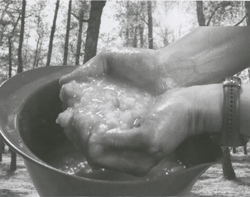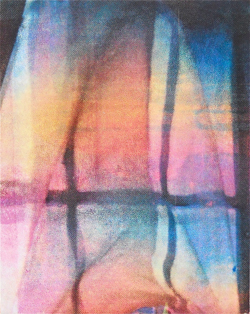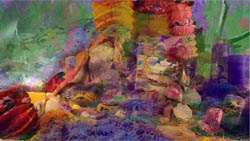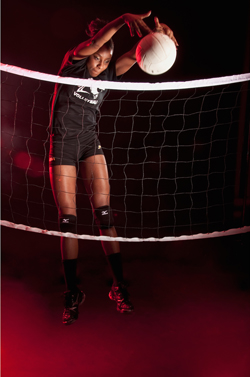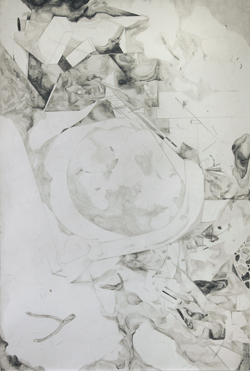Satellite Exhibition
New Faces 2012
August — December, 2012
New Faces 2012, 1708 Gallery's latest satellite exhibition at Richmond's historic Linden Row Inn, features artists that are all students or recent graduates of Virginia Commonwealth University's School of the Arts. Exhibiting artists include Colleen Billing, Hilliary Gabryel, Jennifer Guillen, Elizabeth Guzman, Josie Justice, Michael Muelhaupt, Rachael Starbuck, Mark Strandquist, Breonca Trofort and Egbert Vongmalaithong.
Curated by artist and 1708 Gallery Board Member Amie Oliver, New Faces 2012 features a glimpse of some of the fresh-faced talent enrolled in the BFA program at Virginia Commonwealth University. The media on view varies from photography to drawing, painting to sculpture, video and prints, but each artist's vision and enthusiasm for concepts, materials and process promises to enlighten.
Participating Artists
Colleen Billing
moisturestay, 2012, Video, 4:06, please view online at: http://vimeo.com/48171597
Thinking about shared recognition and with the compulsion to understand meaning in the things we already encounter, I hope to utilize the recycled and the new, the bruised and the adorned, to tease out everyday rituals, their process, and the meaning of touching something a thousand times.
Often posing a paradoxical critique and compliance of romance, I hope to suggest the transcendental or sentimental but at times, without compliance. Keeping in mind notions of early landscape painting, found textiles, cosmetics, the aura of ageing and memoriam, my work urges relationships between the mundane and the moving. I am interested in transformation and the ways in which we connect to the world, how we know ourselves through the things we encounter.
My most recent works explore the salon and it's focus on care and preservation of the self, the healing capabilities of the cosmetic and the anxiety of decay and rot, as well as the ways in which color, both natural and artificial, is applied, suspended and imperative to experience. Initiating relationships between the domestic and the strange, I hope to access the notions of the surreal through the consideration of the ordinary.
Hilliary Gabryel
As a growing artist and person I believe I am forever enamored by being able to discover ideas in the labyrinth of my dreams, and thus imagine, grow and invent works from the soot sneezed by the giants and trolls I am likely to have kept as pets and revered reminders of possibility. I believe my artwork hence to be a capture of specific moments of the intuitions design, compelled by indulgence in movement and somewhat quixotic desire to be forever enthralled and in a state of excessive wonder. By means of this perspective, my work is a record of ephemeral moods and thoughts, as well as a manifestation of the worlds in which I dwell. In essence I imagine my works to be narrative entities that are guided into tangible existence.
Jennifer Guillèn
I am interested in the ways in which different facets of my identity can be translated into my work to create narratives that are seemingly romantic and nostalgic with political undertones. The subtle tension between these opposing ideologies, are meant to mirror the realities and elusiveness surrounding national identities. I hope to explore the concepts of landownership, borderlands and their relation to nationhood and colonial legacies in order to shift my focus from the extremely personal to considerations of universal issues of nationhood.
Elizabeth Guzman
I use color as an avenue for abstraction, creating rough impressions, as well as using the arrangement of objects (as if it were the set of a play) to define space within a painting. Intense and vibrant colors create the illusion of depth while simultaneously flattening the objects in space. My most recent work centers around a series of screen prints and paintings of a window in my room. The deep dramatic shadows cast by brief moments of light creates a strong sense of poetic imagery in which the viewer can see a narrative in an otherwise minimal painting. I am strongly influenced by David Hockney's LA swimming pools, Rashid Johnson's installation paintings, Matisse's Red Studio, Patrick Caulfield; the list goes on.
Josie Justice
Swedish Bread Harem, 2011, Video, 5:00, please view online at: http://vimeo.com/m/38870272
Josie wants people to feel feelings that she likes/to take them somewhere. She has tributaries of optimism and ladles portions of fortunes, allowing the metabolization of mind-ripening enzymes.
Michael Muelhaupt
The object in this exhibition I have included in multiple works over the past couple of years. Usually it appears in multiples, but here it is alone. When alone, the focus shifts from outside to inside. Here it becomes less about image. This object was made to be about what goes inside.
Rachel Starbuck
I am interested in ways of knowing; in the ways in which we attempt to make sense of the things we encounter. So much of life is beyond the grasp of individuals that we sometimes struggle to discuss life in terms that are easier to manage. As a result of this daily endeavor we must make concessions in our observations in order to process the inundation of information. We must bring things much larger then ourselves down to a scale we can better relate to. I am interested in the ocean for the exceptional range of scales in which it can be considered. Attempting to grasp the depth of the ocean as a whole is almost unfathomable while at the same time I am able to fully immerse myself in it and examine the smallest particles clinging to my feet when I emerge. I am concerned with employing these more manageable tactile moments as a means to relate to those things many times beyond my scale of reference.
This contrast between impenetrable depths and tactile, up-close contact is closely related to the experience of making and viewing art. While making my work I am attentive to a wide range of different concerns, things that are more concretely approachable material concerns as well as things that I cannot even fully formulate in my own mind. I don't expect or attempt to be able to translate or represent those unfathomable ideas in a sculptural object, but for me, the process of physically working with materials is a way to process the multitude of disparate thoughts and information about more ineffable things. Experimenting with what I am capable of physically creating and manipulating helps me to accept what I am able to grasp in my general understanding of the world around me as well. Working by hand with materials gives me the opportunity to investigate more immediately tangible relationships. It is through this close relationship with materials and making that I hope to be able to find new ways to attempt to make sense of objects and thereby, the world.
Mark Strandquist
The passage of 2012's early days and weeks saw the clearing of the last American Occupy encampments. With the end of these occupations came the loss of their most basic, and perhaps, most profound element; the physical visualization of inequality. How then, as nature, weather, and re-landscaping threaten to white wash any evidence of occupation, will this movement be remembered?
This series of photographs is an attempt to capture both the historic and ephemeral elements of the "occupy" movement. The images provide a documentation of the physical imprint created by the tents used during the occupation of public parks in Washington, DC.
Within the images, the act of occupation and those who participated are both present and absent. The blades of grass, flattened ground, and lines of leaves are, and are not, representative of those individuals. They are evidence of their history and reflections of their commitment, but they are also natural objects devoid of human existence.
This struggle between absence and presence defines the space and is made more intense by the fragile and temporary nature of these ghost-like imprints. With one gust of wind or the placement of a piece of grass sod, the physical history, the silhouette of a movement, could cease to exist. In a culture filled with monuments, museums, and an abundance of historical plaques, these photos will act as proof of the movement's physical and symbolic impact.
Breonca Trofort
Growing up with a passion for both sports and arts, Breonca Trofort chose to make the sacrifice of giving up her basketball dreams in high school to focus on creating art. In college, she chose to embrace the love and passion she once shared, and decided to explore other athletes who made sacrifices to focus on their goals. Mixing both passions, art and sports, she aimed to display how art is a significant trait used within sports where their body is the key instrument in achieving.
Egbert Vongmalaithong
I believe that there is amazing potential in how humans and objects exist in the world and how they come together. There is uncertainty that surrounds what I understand as truth and as fiction, and this begins my process in the studio. I attempt to deconstruct the idea of something physical and create a new gesture for that thing. For example, I look at a wall and think of it as a shape that I can slide downward to make it slouch, and the mirror that hangs on that wall is now floating in space. I have a new understanding of the space. I imagine these shapes to waltz.
